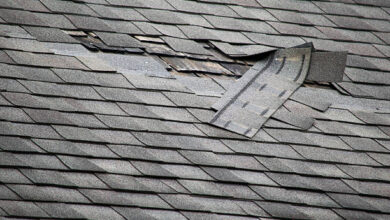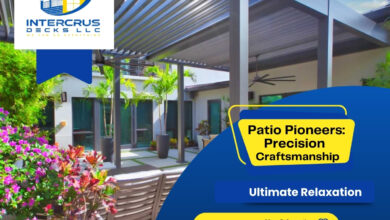Ensuring Stability: How Long Do Foundation Repairs Last?
Understanding Do Foundation Repairs Last Methods
Before discussing the longevity of foundation repairs, it’s essential to understand the methods commonly used to address foundational issues. Different techniques, such as slabjacking, piering, or underpinning, are employed depending on the nature and severity of the problem. Each method comes with its own set of considerations regarding durability and effectiveness.
Factors Influencing Longevity
Several factors can influence the longevity of foundation repairs, including:
- Quality of Materials: The materials used in the repair process play a significant role in determining its longevity. High-quality materials are more durable and resistant to environmental factors.
- Professional Installation: Proper installation by experienced professionals ensures that repairs are executed correctly, reducing the likelihood of future issues.
- Soil Conditions: The type and condition of the soil beneath the foundation can impact its stability. Expansive soils, for example, can exert pressure on the foundation, potentially compromising repairs over time.
- Water Management: Proper drainage and moisture control around the foundation are essential for preventing water-related damage, which can undermine repair efforts.
- Regular Maintenance: Regular inspections and maintenance help identify any emerging issues early on, allowing for prompt remediation and prolonging the lifespan of repairs.
Average Lifespan of Foundation Repairs
While the exact lifespan of foundation repairs can vary depending on the aforementioned factors, most well-executed repairs can be expected to last for several decades. On average, foundation repair specialists suggest that repairs can remain effective for 20 to 30 years or more under favorable conditions. However, it’s important to note that this is a general estimate, and individual cases may vary.
Extending the Lifespan of Foundation Repairs
Homeowners can take proactive steps to extend the lifespan of foundation repairs and ensure the long-term stability of their homes:
- Invest in Quality Repairs: Opt for reputable contractors and high-quality materials to ensure that repairs are done right the first time.
- Address Underlying Issues: Identify and address any underlying issues, such as poor drainage or plumbing leaks, that contributed to the foundation problems in the first place.
- Maintain Proper Drainage: Implement effective drainage solutions, such as gutters, downspouts, and French drains, to redirect water away from the foundation.
- Monitor Soil Moisture: Keep an eye on soil moisture levels around the foundation and implement measures to prevent excessive expansion or contraction of the soil.
- Schedule Regular Inspections: Schedule routine inspections by foundation specialists to detect any signs of deterioration or movement early on.
Types of Foundation Materials and Their Durability
The type of foundation material used can significantly impact the longevity of repairs. Here are some common foundation materials and their respective durability:
- Concrete: Concrete foundations are known for their durability and longevity. Properly installed and reinforced concrete foundations can withstand the test of time, often lasting for several decades with minimal maintenance.
- Brick and Stone: Brick and stone foundations are renowned for their strength and stability. While these materials can be durable, they may require occasional maintenance, such as repointing mortar joints, to prevent water infiltration and structural issues.
- Wood: Wood foundations are susceptible to rot, insect infestation, and moisture damage. Repairs to wood foundations may require more frequent attention and maintenance compared to other materials to ensure their longevity.
- Steel and Metal: Steel and metal foundations are less common but offer excellent strength and durability. Properly treated and maintained, these foundations can last for many years, but they may be susceptible to corrosion in certain environments.
- Composite Materials: Some modern foundations utilize composite materials, such as fiberglass or reinforced plastics, which offer a combination of strength, durability, and resistance to environmental factors. These materials may provide long-lasting repairs when installed correctly.
Understanding the characteristics of different foundation materials can help homeowners make informed decisions when it comes to repairs and maintenance, ultimately contributing to the longevity of their foundations.
Environmental Factors and Their Impact on Foundation Repairs
Environmental factors play a significant role in the longevity of foundation repairs. Here are some key considerations:
- Climate: Extreme temperatures, fluctuations in humidity, and seasonal weather patterns can affect soil conditions and foundation stability. Regions prone to freeze-thaw cycles or heavy rainfall may experience more significant wear and tear on foundations over time.
- Geological Conditions: Geological factors, such as soil composition, slope stability, and seismic activity, can influence the risk of foundation movement and settling. Understanding local geological conditions is essential for assessing the long-term performance of foundation repairs.
- Vegetation and Landscaping: Trees and large vegetation near the foundation can impact soil moisture levels and root intrusion, potentially leading to foundation issues. Proper landscaping practices, such as maintaining adequate distance between trees and the foundation and installing root barriers, can help mitigate these risks.
- Water Table: The depth of the water table beneath the foundation can affect soil moisture levels and hydrostatic pressure. High water tables increase the risk of water intrusion and soil expansion, which can compromise foundation stability over time.
By considering these environmental factors and implementing appropriate mitigation measures, homeowners can minimize the risk of foundation damage and prolong the effectiveness of repairs.
Signs of Foundation Problems and When to Seek Repairs
Early detection of foundation issues is crucial for preventing further damage and ensuring the longevity of repairs. Here are some common signs of foundation problems to watch out for:
- Cracks in Walls or Floors: Vertical, horizontal, or diagonal cracks in interior or exterior walls, floors, or ceilings can indicate foundation movement or settlement.
- Uneven Floors: Floors that slope or feel uneven when walking across them may be a sign of foundation settlement or structural issues.
- Doors and Windows Sticking or Misaligned: Difficulty opening or closing doors and windows, or gaps between the frames and walls, may indicate foundation movement.
- Bowing or Leaning Walls: Bowing or leaning walls, particularly in basements or crawl spaces, can signal foundation failure or structural instability.
- Moisture or Water Intrusion: Dampness, mold, or water stains in basements or crawl spaces may indicate poor drainage or foundation leaks.
If any of these signs are observed, it’s essential to consult with a qualified foundation specialist to assess the situation and determine the appropriate course of action. Prompt repairs can help prevent further damage and ensure the long-term stability of the structure.
Conclusion
Maintaining a solid foundation is essential for the structural integrity and longevity of any building. While the exact lifespan of foundation repairs can vary depending on factors such as materials, installation quality, environmental conditions, and maintenance practices, homeowners can take proactive steps to maximize their effectiveness. By understanding the different foundation repair methods, addressing underlying issues, considering environmental factors, monitoring for signs of problems, and seeking timely repairs when necessary, homeowners can ensure that their foundation remains stable and secure for years to come. Investing in the longevity of foundation repairs, including slab foundation repair, is an investment in the long-term health and stability of the home.


